Do you have a question about the Carrier Infinity 25HNB6 and is the answer not in the manual?
Understanding safety symbols and signal words for hazard awareness.
Warning about severe injury or death from electrical hazards during installation.
Caution concerning sharp edges on sheet metal parts causing potential injury.
Guidelines for securing the unit to a stable, level mounting pad.
Specifications for maintaining adequate space around the unit for airflow and service access.
Instructions for elevating the unit to ensure drainage and clearance above snowfall.
Requirements for installing solenoid valves in long-line refrigerant piping.
Procedures for connecting refrigerant lines, including crucial safety warnings.
Procedure for correctly installing the required liquid-line filter drier.
Steps for connecting refrigerant tubing to the outdoor unit and adapter tubes.
Methods for deep vacuum or triple evacuation to remove air from the system.
Guidelines for safe routing and connecting power and ground wires.
Instructions for connecting low-voltage control wires to the unit's control board.
Verifying secure wiring terminations and proper routing for reliability.
Essential steps for safely initiating system operation after installation.
Adjusting fan speeds for optimal airflow based on system configuration.
How the crankcase heater functions to protect the compressor in cold conditions.
Explanation of the outdoor fan's behavior during various operating modes.
Overview of system time delays for protection and staging.
How the Infinity Control enables low ambient cooling operation without a kit.
Details on defrost intervals, initiation conditions, and termination criteria.
Procedures for verifying and adjusting refrigerant charge for optimal performance.
Using charts to check system operation and refrigerant charge in heating mode.
Description of key components like control boards, compressors, and contactors.
Diagnosing issues related to communication failures between system components.
How high and low-pressure switches protect the system from abnormal pressures.
Monitoring compressor voltage for proper operation and potential faults.
Methods to test the compressor's unloader mechanism for proper staging.
Understanding thermistor function and resistance values for temperature sensing.
System behavior when outdoor air or coil thermistors fail.
How to read and interpret amber LED status codes for diagnosing system faults.
Understanding safety symbols and signal words for hazard awareness.
Warning about severe injury or death from electrical hazards during installation.
Caution concerning sharp edges on sheet metal parts causing potential injury.
Guidelines for securing the unit to a stable, level mounting pad.
Specifications for maintaining adequate space around the unit for airflow and service access.
Instructions for elevating the unit to ensure drainage and clearance above snowfall.
Requirements for installing solenoid valves in long-line refrigerant piping.
Procedures for connecting refrigerant lines, including crucial safety warnings.
Procedure for correctly installing the required liquid-line filter drier.
Steps for connecting refrigerant tubing to the outdoor unit and adapter tubes.
Methods for deep vacuum or triple evacuation to remove air from the system.
Guidelines for safe routing and connecting power and ground wires.
Instructions for connecting low-voltage control wires to the unit's control board.
Verifying secure wiring terminations and proper routing for reliability.
Essential steps for safely initiating system operation after installation.
Adjusting fan speeds for optimal airflow based on system configuration.
How the crankcase heater functions to protect the compressor in cold conditions.
Explanation of the outdoor fan's behavior during various operating modes.
Overview of system time delays for protection and staging.
How the Infinity Control enables low ambient cooling operation without a kit.
Details on defrost intervals, initiation conditions, and termination criteria.
Procedures for verifying and adjusting refrigerant charge for optimal performance.
Using charts to check system operation and refrigerant charge in heating mode.
Description of key components like control boards, compressors, and contactors.
Diagnosing issues related to communication failures between system components.
How high and low-pressure switches protect the system from abnormal pressures.
Monitoring compressor voltage for proper operation and potential faults.
Methods to test the compressor's unloader mechanism for proper staging.
Understanding thermistor function and resistance values for temperature sensing.
System behavior when outdoor air or coil thermistors fail.
How to read and interpret amber LED status codes for diagnosing system faults.
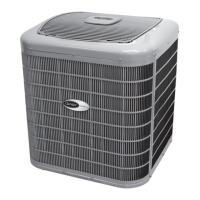

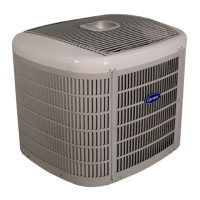


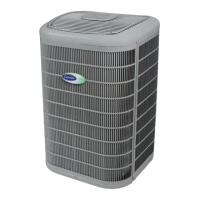

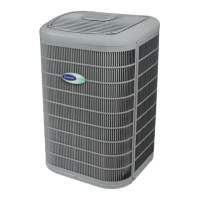
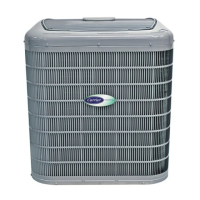
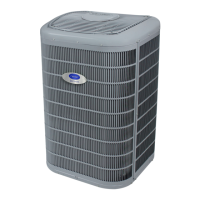

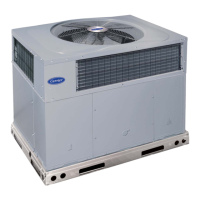
